What is stonewashed cutlery?
You love the rugged, matte look of modern cutlery but hesitate to buy it. You're worried it's just a fragile trend that will look terrible once it gets a real scratch.
Stonewashed cutlery is stainless steel flatware that is tumbled with abrasive materials, like ceramic stones, to create a non-reflective, intentionally distressed matte finish. This process makes it exceptionally good at hiding everyday scratches.
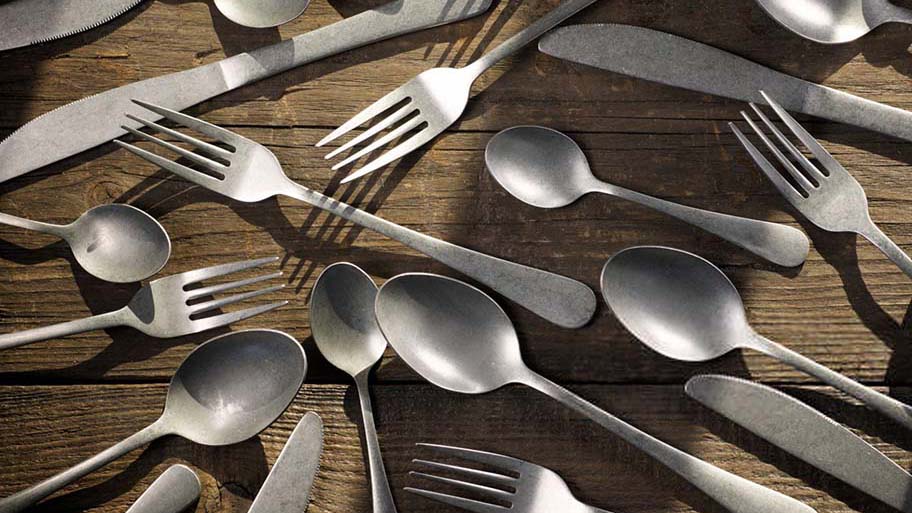
When we first started getting requests for stonewashed finishes in my factory, I thought it was a niche trend. But then my most practical client, a buyer named Jacky, started specifying it for his restaurant chains. "This finish hides the crime," he told me. He meant it hides the daily wear and tear of a busy kitchen. Now, it's one of our best-selling finishes. It’s a brilliant fusion of industrial style and incredible practicality, but the magic is in how it's made.
How is stonewash cutlery made?
You see the "stonewashed" label and imagine someone throwing forks into a river. You know that can't be right, but you have no idea what the actual manufacturing process involves.
Stonewashed cutlery is made by placing fully formed stainless steel pieces into a large, industrial tumbling machine with abrasive media. The machine vibrates and tumbles for hours, creating a uniform, non-directional matte texture.
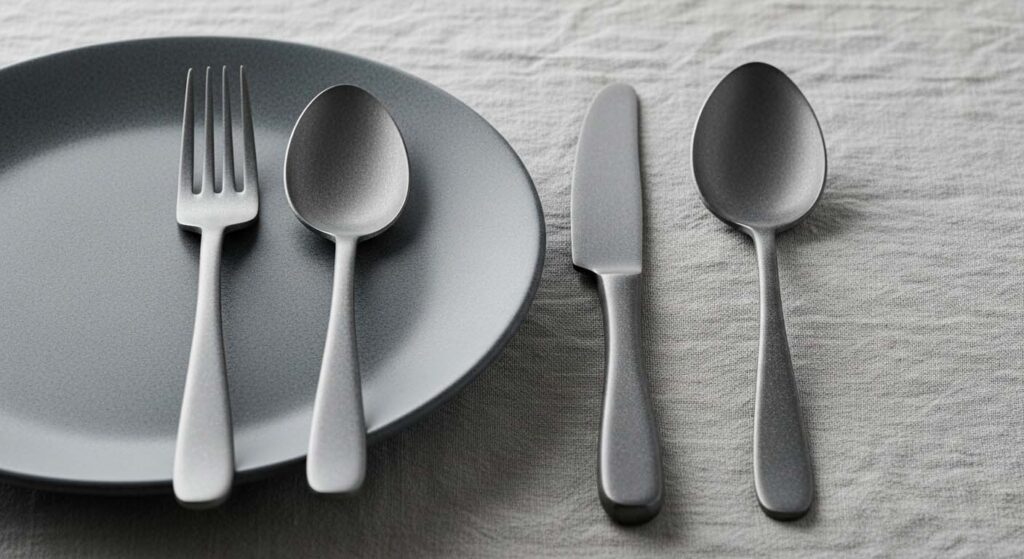
The process is more sophisticated than just roughing up the metal. It’s a controlled technique that we have perfected over time. We start with a completely finished fork or knife, usually made from high-quality 18/8 or 18/10 stainless steel. The piece is fully formed but typically has a simple satin or pre-polish finish. We then load thousands of these pieces into a large vibrating tumbler1, which looks like a high-tech cement mixer. Along with the cutlery, we add the "media" — small, specifically shaped ceramic stones. The size and shape of these stones determine the final look. Smaller media creates a fine, soft matte texture, while larger, more angular media creates a more rugged, distressed look. The machine then tumbles the load for several hours, allowing the stones to create millions of tiny, random impacts on the steel's surface. Finally, the cutlery is removed, thoroughly washed to remove any residue, and dried. It's a time-consuming, physical process that creates a truly unique and durable finish.
What are the benefits of stonewashed cutlery?
You need silverware for your busy restaurant or family. You're tired of sets that get covered in tiny scratches and fingerprints, looking old just months after you buy them.
The main benefit of stonewashed cutlery is its ability to hide scratches and wear. Its pre-distressed, matte finish conceals new marks from daily use, requiring less maintenance and polishing to keep it looking great.
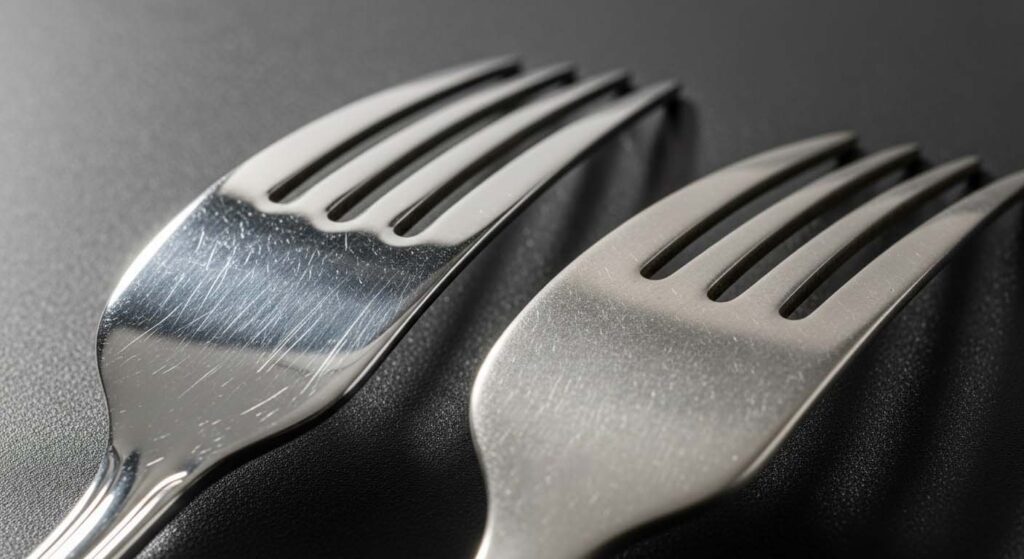
The genius of the stonewashed finish is that its strength is also its style. The surface is already a collection of thousands of tiny, random scratches created during the tumbling process. When you get a new scratch from daily use, it simply blends into the existing pattern instead of standing out as a flaw. This is the complete opposite of a mirror finish, where every single mark is obvious. Jacky calls this "built-in camouflage," and it’s why he orders it for nearly all of his high-traffic hotel and restaurant clients. The benefits go beyond just hiding scratches. The matte surface doesn't show fingerprints as easily as a shiny polish, which drastically cuts down on the labor needed for polishing in a commercial setting. For home use, it means your cutlery looks great right out of the dishwasher without any extra wiping. It delivers a relaxed, modern aesthetic that feels both high-end and approachable, making it incredibly versatile.
What is the difference between satin and stonewashed cutlery finishes?
You're shopping for matte silverware, but some sets are "satin" and others are "stonewashed." They look similar online, and you're not sure which finish is tougher or which will look better.
A satin finish is a smooth, uni-directional brushed texture with a soft sheen. A stonewashed finish is a rougher, multi-directional tumbled texture that is completely non-reflective and better at hiding wear.
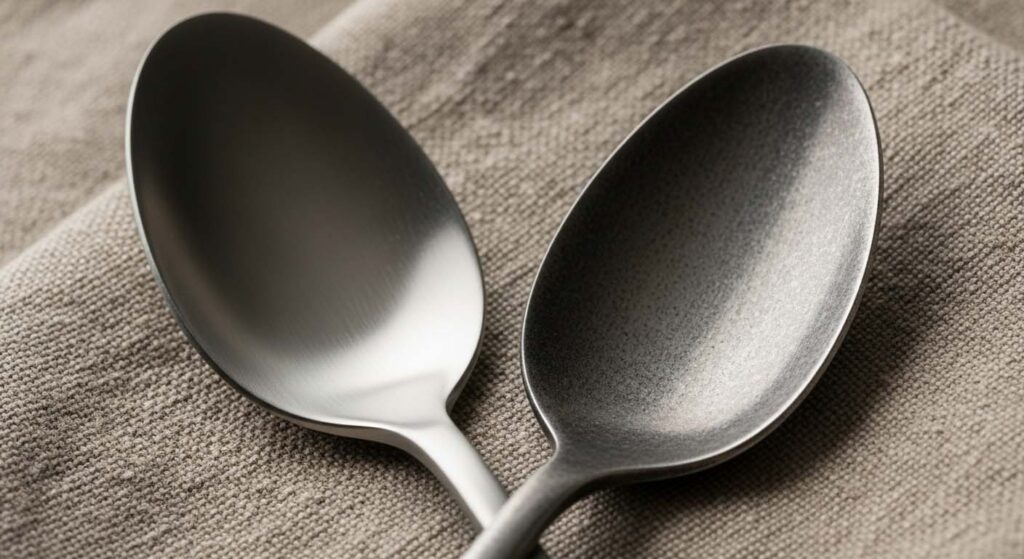
While both finishes are alternatives to a traditional mirror polish, they are created differently and have distinct characteristics. In my factory, we use completely different machines and processes for each one. A satin finish is created by brushing the steel with an abrasive belt, which creates very fine, parallel lines that give it a soft, silky glow. It's a very controlled and uniform look. Stonewashing, on the other hand, is a random, chaotic process that results in a more rugged, mottled texture. The key difference for a buyer is how they handle wear and tear.
| Feature | Satin Finish | Stonewashed Finish |
|---|---|---|
| Process | Brushing (Uni-directional) | Tumbling (Multi-directional) |
| Appearance | Soft sheen, fine parallel lines | Matte, non-reflective, random texture |
| Scratch Resistance | Good. Hides fingerprints well. | Excellent. Hides scratches the best. |
| Best For | Clean, modern, minimalist decor. | Rustic, industrial, high-traffic settings. |
A scratch on a satin finish that goes against the grain of the brushing can be very noticeable. On a stonewashed finish, a new scratch has no grain to go against, so it just blends in seamlessly.
Does stonewashing cutlery prevent rust?
You see the rugged, worn-in look of stonewashed cutlery and wonder if the process damages the steel. You worry that it might scrape away the protective layer, making it prone to rust.
No, stonewashing does not affect rust resistance. The cutlery's ability to resist rust comes from the quality of the stainless steel itself (18/10 or 18/8). The stonewashing process only changes the surface texture.
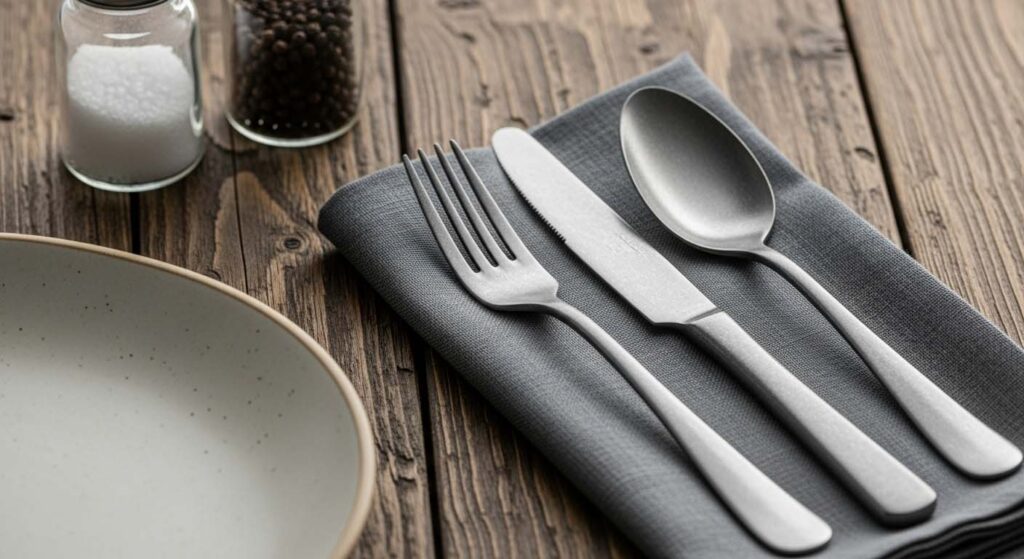
This is a common and very smart question. It seems logical that abrading the surface might compromise it, but that's not how stainless steel works. Rust resistance is not a coating; it's a fundamental property of the metal alloy itself. The "18" in 18/10 or 18/8 stainless steel stands for 18% chromium, which creates a passive, corrosion-resistant film on the surface. The "10" or "8" stands for the nickel content, which provides a second layer of defense against rust. The stonewashing process is purely mechanical. It alters the texture of the outer-most surface, but it's not deep enough to remove a meaningful amount of the steel or change its chemical composition. Think of it like a stone wall. You can have a smooth-faced stone wall or a rough-faced one; the texture is different, but they are both still made of solid, durable stone. As long as you start with high-quality 18/10 or 18/8 steel, the finished stonewashed product will be just as rust-resistant as its mirror-polished counterpart.
Conclusion
Stonewashed cutlery is a durable, stylish choice made by tumbling steel with stones. Its key benefit is a matte finish that expertly hides scratches, making it perfect for everyday use and busy restaurants.
-
Learn about the vibrating tumbler process to see how it enhances the finish of metal products, ensuring durability and aesthetics. ↩
